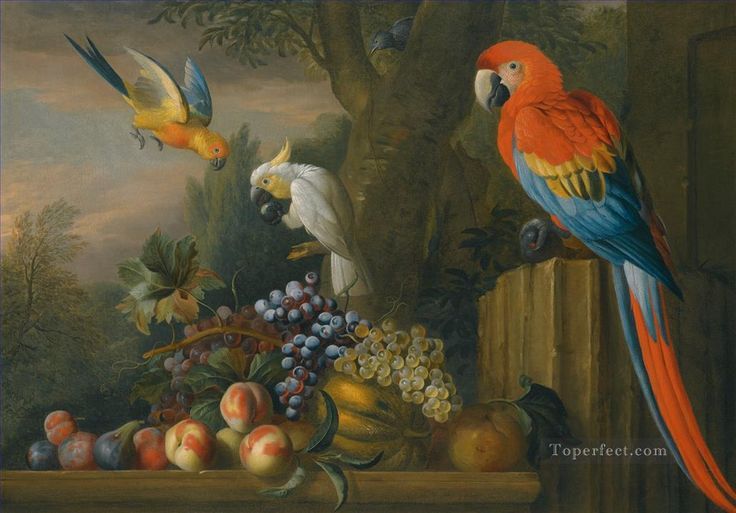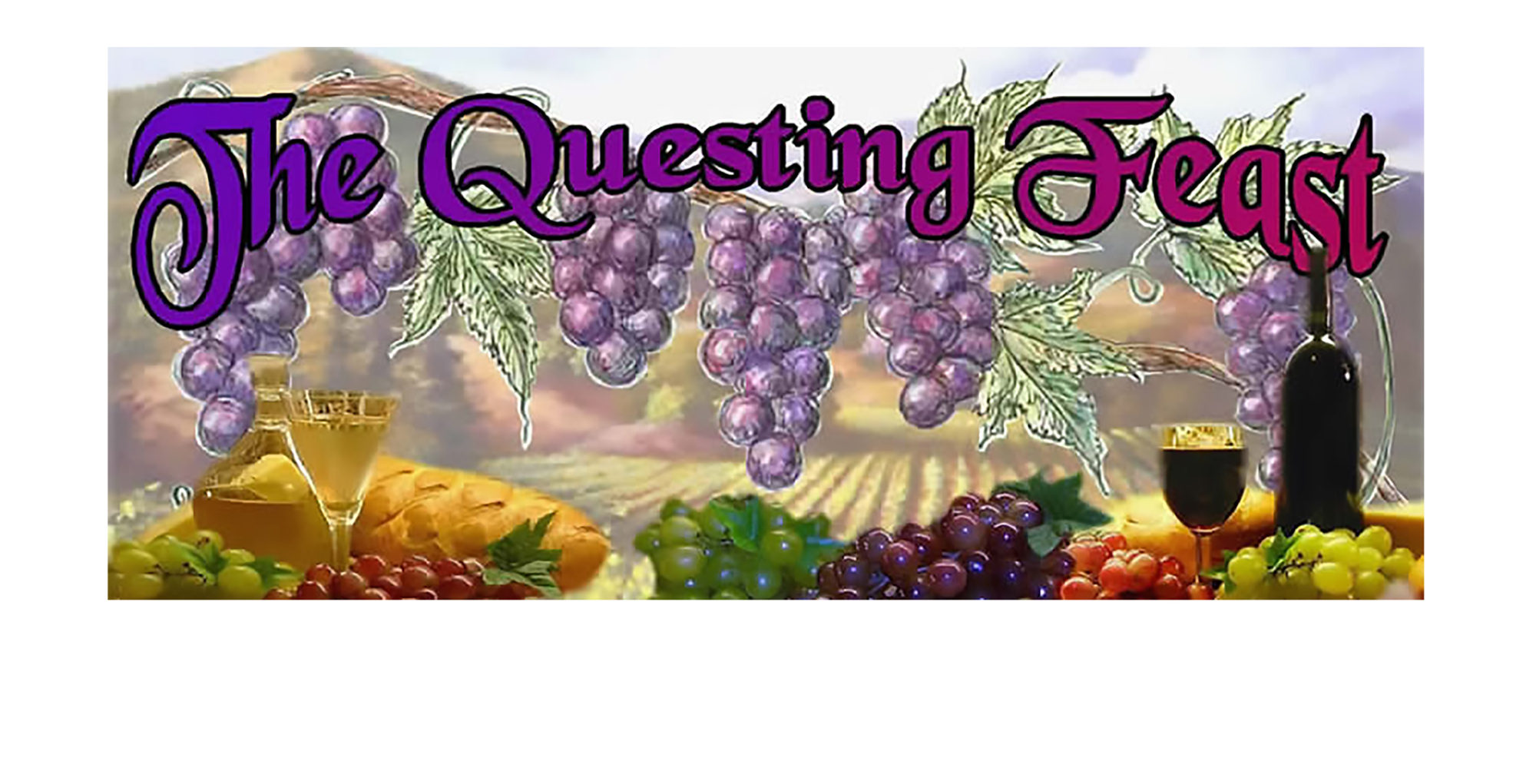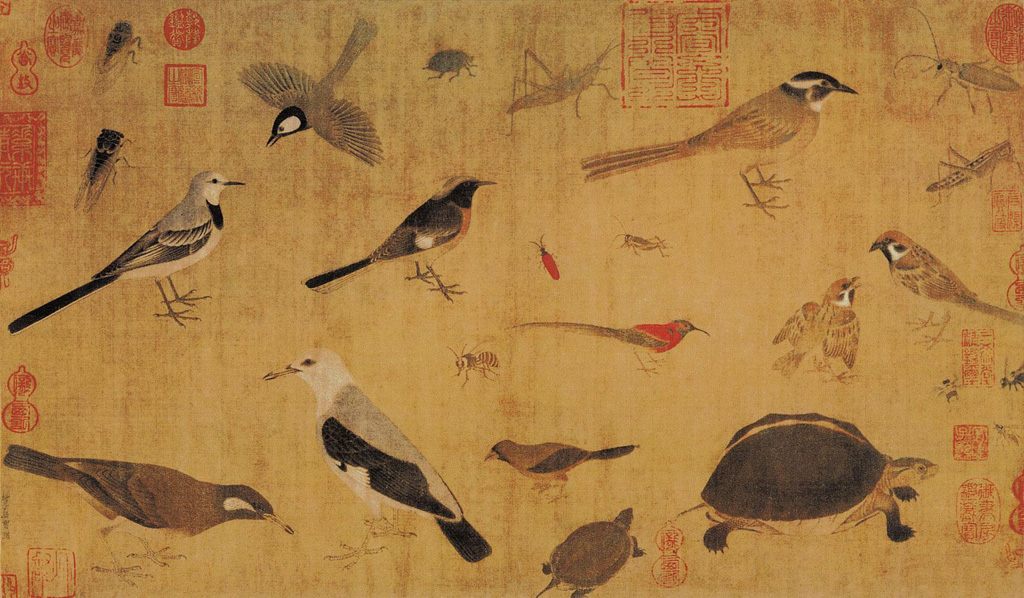by Lakea Lin (copyright 2022 Lakea Lin)
To learn more about the feature image visit: ChinaCulture.org
My goal has always been to be able to cook in a way that is inclusive for all members of the family, even those that are not human. Though our nutritional needs may differ, I can at least try to make foods that are animal-safe in small amounts. And if there is a case of mistaken identity, I have heard many humorous stories about families that enjoyed “granola bars” which were actually meant for the birds, as well as “kool-aid” that was sweeter than any they had experienced before (turns out, hummingbirds prefer the best recipe). After all, food is important to a family.
For the wild birds who care to join me, a complicated recipe is not necessary. In fact, many bird seed mixes are filled with millet and other types of filler that the birds would toss. To make the most of my money, I would buy or grow bags of black oil sunflower seeds from pet stores and grocery stores. Birds are not picky about the type of sunflower, but I read that black oil contains the most nutrition for them. Uncooked and unshelled is fine, just make sure that they haven’t been salted or roasted in something. Many birders even make wreaths of dried sunflower heads and the birds will help themselves to those. After all, the best way to attract birds while allowing them to remain wild is to plant their favorite native food sources.
I was lucky enough to live in an area with Scrub Jays, so peanuts and cracked corn were a must for attracting them and their corvid relatives. Again, uncooked, unseasoned, and unshelled is fine. Aflatoxin-tested is a plus, but keeping your supply fresh may be a better idea. I suspect that they would also appreciate other sources of protein, as I’ve seen their relatives in Alaska shelling uni. I also see many ravens in my area flying around with cheese puffs, but how they acquired those and whether or not those are healthy for them warrants further investigation which I am not inclined to do in favor of eating those snacks myself. I normally feed my animals better than I feed myself, but not when a food may be too indulgent for them. Ravens also love eyeballs (which is depicted in many traditional Alaskan art forms) but sourcing those may be frowned upon.
Speaking of corvids, people used to feed them and other scavenging birds as a form of divination known as augury. The word “auspicious” comes from the Latin “one who looks at birds,” as this practice was known as “taking the auspices.” Its invention is attributed to the prophet Tiresias who features in as many stories as he has extra lives. He is also transgender as a classic liminal figure. The ways in which the birds eat, what they eat, and even the number of birds that show up all factor into the divination. Many of us may be familiar with the Mother Goose rhyme:
One for sorrow, two for joy,
Three for a girl, four for a boy,
Five for silver, six for gold,
Seven for a secret that must never be told.
This poem refers to the number of magpies that show up, although many versions exist that also apply to other black birds. This is also why a flock of magpies is called a “tiding.”
Eight for a wish,
Nine for a kiss,
Ten a surprise you should be careful not to miss,
Eleven for health,
Twelve for wealth,
Thirteen beware it’s the devil himself.
Aesop (yes, the one responsible for Aesop’s Fables. Who knew he was born a slave, possibly in Ethiopia where his name may be derived? He was so dark-skinned that he almost died of hypothermia when one of his masters tried to wash his color off of him, and he was so deformed with a hunchback and misshapen head that he couldn’t even speak until a deity granted him the power at the age of 8) was once told to look outside to tell his master Xerxes about the number of ravens he counts. Aesop saw two, and reported the good news to his master who prepared for a joyous outing. However, upon stepping outside his master saw one raven. He started beating Aesop, claiming that he was trying to get him in trouble, when a messenger arrived and told Xerxes that the prince had invited him to a party. On seeing this, Aesop remarked on the irony that he was beaten after seeing two ravens, while his master was invited to a party after seeing one. He did eventually gain his freedom because Xerxes wanted to be rid of him but could not sell him because his value as a slave couldn’t get any lower.
One’s sorrow,
~Brewer’s Dictionary of Phrase and Fable
Two’s mirth,
Three’s a wedding,
Four’s a birth,
Five’s a christening,
Six a dearth,
Seven’s heaven,
Eight is hell,
And nine’s the devil his old self.
The role of harbinger does not seem to bode well for the birds themselves, as Greek myth claims that the raven was scorched black after it informed Apollo of the unfaithfulness of his lover, Coronis. I prefer to invite them to the table with nothing expected in return except for their good company.
For the smaller birds, I had special thistle feeders because thistle is a smaller seed that is harder to keep in some feeders, not to mention expensive and difficult to remove if it takes root. I also despise flax seed for its tendency to stick to things, and so I prefer it in bread than I do in bird feeders. I have seen valiant efforts by oak titmice to carry off peanuts, but I found that adding some diversity encouraged all the birds to share. I had always seen crowds of little goldfinches in the area, but they never visited the feeder until I added thistle to the mix. So much of feeding birds is observing them to see what they may be struggling with and how you can meet that need. When your observation skills pay off, you are rewarded with so much wonder.
It is entertaining to watch how different birds go about shelling seeds, unless you wish to spare yourself the trouble of cleaning shells. Birds are messy eaters, so complicated feeders are not necessary either unless you wish to discourage certain species that are not good at sharing. It is also important to know what the rules in your area may be, since the mess that birds make is not always welcome. It is also a good idea to stay up to date on what local wildlife rescues or other agencies dealing with wildlife may say, as they often warn of diseases that may be affecting birds and ways to prevent their spread at feeders (like washing more often or taking down feeders at certain times). They can also give updates on migrations and other visitors you may expect.
If you are fortunate enough to live in an area with parrots (and you may be surprised how many places have them, as escaped pets who thrive on ornamental palms) they may benefit from palm nuts. I often find surprise flocks of urban parrots on palm trees in parking lots and shopping centers. Pickier birds like hyacinth macaws seem to respond well to macadamia nuts. Remember, when hand-feeding nuts to a parrot, place the nut on the center of your palm and hold your hand out flat so that the bird (many of whom are extremely far-sighted) can tell the difference between your hand and the nut instead of conflating the two and mistaking your hand for a shell that needs to be cracked to access the nut. Some hyacinth macaws even make use of tools like string or sticks to get a better grip on bigger nuts when cracking them.

There are also many ways of making a feeder inaccessible to all but those with wings by installing guards or by elevating it using slippery surfaces. My feeders tend to be upturned or broken open by the birds themselves before long (as we have many acorn and nut eaters in the area), so I prefer to use platforms, trays, or bowls, located close to greenery and other potential sources of shelter so that dinner guests may hide in case of predators. Of course, some birders enjoy having a “two-tiered feeder,” but I prefer simplicity for the sake of cleaning. Feeders should be washed weekly, or more frequently if conditions may invite early spoilage (especially for live prey, hummingbird feeders, and other sweets). Do not use strong chemicals as birds have sensitive lungs. 9 parts water to 1 part bleach, or 1 part water to 1 part vinegar, or Dawn dish soap work. Simple Green was also a popular option in many of the labs and wildlife rescues I’ve volunteered with. Feeders should ideally be soaked for 10 minutes in the aforementioned solutions, but spraying and waiting for 15 minutes was something that I also did at those labs and rescues.
In summary, the mix that I would recommend for a backyard bird feeder or a hike into an area with friendly birds would be:
Wild Bird Mix
- 1 cup of black oil sunflower seeds
- 1 cup of peanuts
- 1 cup of assorted dried fruits (this may work on birds that are not normally feeder visitors)
- ½ cup of thistle seeds (because they are expensive, and a little goes a long way)
On a hike, it may also be a good idea to bring some cat food and water, as well as a water bowl for any long-lost pets you may find. That being said, if you find a wild animal that is not behaving normally (as a skittish wild animal), it is not a good idea to feed them or give them water. Leave that to the professionals.
This mix could also be added to peanut butter and slathered on bark or pinecones, which make lively holiday ornaments since they may even attract shy birds like woodpeckers and nuthatches. It is even possible to add melted coconut oil to this mix and freeze for three hours in fun shapes to create suet cakes that are great for helping chickens to regrow their winter feathers.
In addition to birdseed, frozen peas, broccoli, kale, chopped cabbage, and sliced grapes may be popular with waterfowl at the duck pond. There are many videos of Pet Goose George eating watermelon off the ribs, or corn off the cob (he’ll sharpen the cob like a pencil, as his caretaker would say. Just remember to dispose of the cobs so they don’t dirty the water after). This is also a great way to teach kids about the vegetables they won’t eat.
From there, you can adjust based on who shows up and what is left over. Bird baths (complete with little marbles or river rocks so they can double as bee baths) as well as jam feeders and mealworm feeders may be good options if you see birds that are more difficult to attract to a feeder. Oranges and orange peels are great for filling with jam to attract more nectar-eating species, while there are plenty of stories about unexpected visitors to hummingbird feeders. Both may require an ant moat and more frequent washings. Mealworms and stuff from the bait shop may work to attract birds that are not seed or fruit eaters, although the best way to attract those may be to build a birdhouse that meets their specifications. Live mealworms are preferred, but my pet fish aren’t so picky. Some birders offer nesting materials, but those need to be kept short and natural in case of tangles. Again, it may be best to offer native plant species and other sources of natural nesting material for them to collect themselves.
Despite all our efforts, there may still be birds that will never grace our feeders. We may see swallows swooping above. They may even build their mud nests under the sides of our rooftops, but they will never come down to land. The Greeks described those birds as lacking feet in their legends, much as the people who first saw Birds of Paradise, taxidermied without feet, crafted fantastical stories of how those birds spent their entire lives in the air. In a tragic twist, the albatross that has lost its nesting grounds may also be described as a wanderer who will never touch land again. Instead of despairing that such birds may never join us at the table, I prefer to look to those that do spare a moment for us, and appreciate the spaces that we can share with the others.
Hummingbird nectar recipe
- 4 parts white sugar (not honey, not brown) and 1 part water. Tap water is usually fine.
- Stir to dissolve.
- Wash feeders every week in cold weather and every two days in warm weather.
I strongly advise against store-bought nectar and adding red dyes because the wildlife rescue where I volunteered received many hummingbirds in poor condition with red excrement. They are attracted to red colors, but wearing red clothes while feeding them and planting red flowers will more than suffice to attract nectar feeders.

Visit Mexicolore.co.uk for more information.


